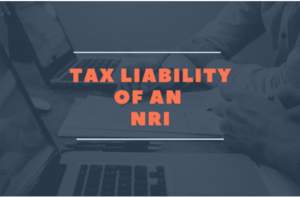Taxpayers belonging to Hindu, Jain, Buddhist, and Sikh communities can often take advantage of a strategic tax-saving mechanism by forming a Hindu Undivided Family (HUF) with their family members. This approach can result in substantial benefits for managing tax liabilities. However, understanding how to dissolve an HUF and manage its post-dissolution investments is equally crucial. In this article, we will walk through the process of HUF dissolution, key considerations, and the fate of associated assets.

What Does Dissolution of HUF Mean?
The dissolution of a Hindu Undivided Family (HUF) refers to the legal termination of its existence as a taxable entity. HUF is a distinctive business structure recognized under Indian tax laws, where family members pool their assets and income for joint management. Dissolution involves the legal process of breaking up the HUF’s assets and ceasing its recognition as a separate tax entity.
Steps to Dissolve a HUF Firm
Dissolving an HUF firm involves a well-defined process, primarily carried out through a partition deed among its members. Below are the key steps involved:
Step 1: Initiating the Dissolution
The process begins with the formal execution of a partition deed, a critical document that specifies how the assets will be divided among the HUF members. This marks the first step in legally disbanding the HUF.
Step 2: Fair Asset Distribution
Under the Hindu Succession Act, the assets of the HUF must be equally divided among all its coparceners. Coparceners are those individuals who have a birthright claim over ancestral property.
Step 3: Rights of Coparceners
Traditionally, only male members of the family (up to three generations) were recognized as coparceners. However, with the 2005 amendment to the Hindu Succession Act, daughters were granted coparcener status, meaning they now have the right to demand a partition of HUF property, just like sons.
Step 4: Tax Considerations
For tax purposes, the Income Tax Act of 1961 acknowledges only a full partition of the HUF as valid. A partial partition does not legally dissolve the HUF, and the HUF will continue to be assessed as a taxable entity. This necessitates the filing of income tax returns by the HUF.
Step 5: Validating the Partition
To ensure the partition is legally recognized, the HUF must submit a formal application or claim to the Income Tax Assessing Officer (AO). The AO may then conduct an inquiry to verify the authenticity of the partition.
Step 6: Role of the Income Tax Assessing Officer (AO)
The AO is responsible for issuing an order under Section 171(3) of the Income Tax Act. This order confirms whether the partition is valid and specifies the official date of dissolution.
Step 7: Official Closure of the HUF
Once the partition is completed and accepted by the AO, the HUF is officially dissolved. A key part of the process is the surrendering of the HUF’s Permanent Account Number (PAN) to the AO, signaling its closure in the eyes of the tax authorities.

Advantages of Dissolving an HUF Firm
Dissolving an HUF can offer several advantages, both in terms of financial flexibility and estate planning. Here are the key benefits:
1. Greater Financial Independence
After the dissolution, coparceners gain full control over their respective shares of assets, which allows them to manage their finances more independently. This can be especially helpful when family members have different financial priorities.
2. Potential Tax Savings
Dissolving an HUF can lead to tax efficiency. As individual taxation may offer more favorable tax rates compared to HUF taxation, splitting assets among family members may result in lower overall tax liabilities.
3. Simplified Succession Planning
Dissolution can make the inheritance process more straightforward, providing clarity in the distribution of assets and minimizing potential disputes among family members in the event of a member’s death.
4. Flexibility in Asset Allocation
Once the HUF is dissolved, each family member can manage their share of assets according to their preferences, allowing for more personalized investment, retirement, and educational planning.
5. Improved Estate Planning
Dissolution may serve as part of a broader estate planning strategy, helping family members structure their assets more efficiently for future generations.
6. Avoidance of Liabilities
Dissolving the HUF helps avoid any liabilities or debts associated with the HUF entity. This is particularly beneficial in case the HUF has outstanding obligations.
7. Adaptation to Changing Family Dynamics
As family circumstances evolve, dissolution allows for financial restructuring to meet the changing needs and goals of the family.
The dissolution of an HUF is a significant financial move that enhances autonomy and eases succession. However, this process must be approached with careful planning and legal guidance to ensure compliance with the law and optimize financial outcomes.
Does an HUF Dissolve Upon the Death of the Karta?
No, an HUF does not automatically dissolve upon the death of the Karta. The HUF continues to exist, and the assets held by the deceased Karta are inherited by the surviving members. The role of the Karta is typically assumed by the senior-most family member, ensuring continuity. In some cases, a younger male member can be appointed as the new Karta with the consent of the other family members.
What Happens to the HUF After the Death of a Family Member?
When a family member passes away, the HUF remains intact. The deceased member’s share of the assets is passed on to the surviving members. The tax status of the HUF remains unchanged, and it continues to function as before, with its property and assets intact.
Need Help?
FAQs
1. What is the process to dissolve an HUF?
The dissolution of an HUF involves executing a partition deed among all the coparceners, which divides the assets of the HUF. The process also includes submitting the partition claim to the Income Tax Assessing Officer (AO) for validation and obtaining an order under Section 171(3) of the Income Tax Act. Once this is completed, the HUF can be officially closed by surrendering its Permanent Account Number (PAN) to the tax authorities. KMG CO LLP provides the best HUF services.
2. Does an HUF automatically dissolve after the death of the Karta?
No, the HUF does not automatically dissolve after the death of the Karta. The HUF continues to exist, and the assets of the deceased Karta are inherited by the surviving members. The senior-most family member typically takes over as the new Karta, maintaining the continuity of the HUF.
3. Who can demand a partition of the HUF's assets?
Previously, only male members of the family up to three generations (such as sons, grandsons, and great-grandsons) had the right to demand a partition. However, after the 2005 amendment to the Hindu Succession Act, daughters also have the same rights to demand a partition, ensuring equal rights for both sons and daughters.
4. Is partial partition valid for the dissolution of an HUF?
No, a partial partition does not legally dissolve the HUF. For the dissolution of the HUF to be recognized by the Income Tax Act, a full partition must be executed. If only a partial partition occurs, the HUF continues to be taxed as an entity, and its income will still be assessed by the tax authorities.
- Login to the e-filing portal.
- Navigate to the ‘Income Tax Forms’ section under the e-File tab.
- Select Form 10A and the relevant assessment year.
- Choose the ‘Prepare and Submit Online’ option.
- Fill in the required details and attach the necessary documents.
- Submit the form using EVC or Digital Signature.
5. How is the partition deed executed?
The partition deed is executed through mutual agreement among all coparceners. It outlines the division of the HUF’s assets and is signed by all members of the HUF. This document is then submitted to the Income Tax Assessing Officer (AO) for validation.
6. What is the role of the Income Tax Assessing Officer (AO) in the dissolution process?
The Income Tax Assessing Officer (AO) plays a critical role in validating the partition process. After reviewing the partition claim, the AO issues an order under Section 171(3) of the Income Tax Act, which either accepts or rejects the partition and sets the official date for the dissolution of the HUF.
7. What happens to the assets of the HUF after dissolution?
Once the HUF is dissolved, the assets are divided among the coparceners as per the partition deed. Each member gains control over their respective share, which they can then manage, sell, or invest as per their individual preferences.
8. Can an HUF be revived after it is dissolved?
No, once an HUF is legally dissolved, it cannot be revived. However, a new HUF can be created with different members, if desired.
9. What are the tax implications of dissolving an HUF?
The dissolution of an HUF could result in the termination of its tax liabilities as a separate entity. Post-dissolution, each member is taxed individually on their share of the assets. It is advisable to consult a tax professional to assess any tax obligations and optimize the tax strategy.
10. How can a family member’s death affect the HUF’s structure?
When a family member dies, the HUF continues to function. The share of the deceased member is inherited by the surviving members, and the HUF remains intact. The tax status of the HUF does not change upon the death of a family member, and it continues to own property and generate income until officially dissolved.
11. Can the HUF’s PAN be retained after dissolution?
No, once the HUF is dissolved and its partition is legally recognized, the Permanent Account Number (PAN) associated with the HUF must be surrendered to the tax authorities. This marks the official closure of the HUF.
12. What benefits come with dissolving an HUF?
Dissolving an HUF provides financial independence to its coparceners, allows for better tax planning, simplifies succession, and offers flexibility in asset management. It can also help avoid liabilities associated with the HUF and streamline estate planning for future generations.
Table of Contents
Toggle



